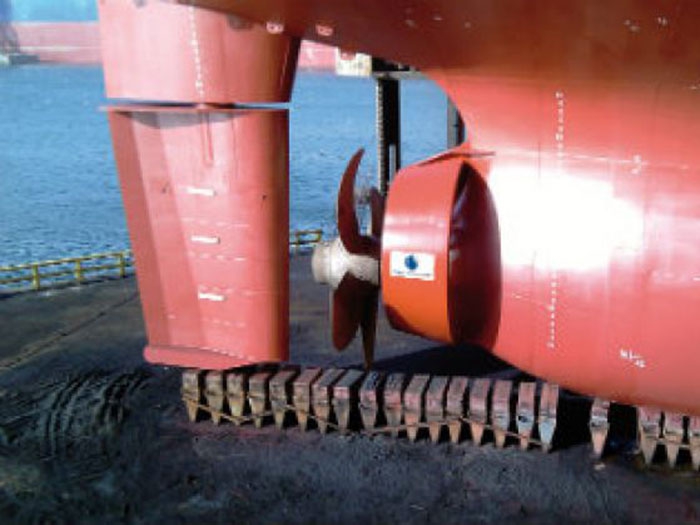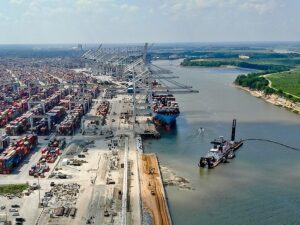
Accurate CFD simulations key to development of Becker Mewis Duct
Written by Marine Log Staff
The Becker Mewis Duct fitted in front of the ship's propeller
JUNE 14, 2018 — Faced with tightening emission and environmental regulations, ship operators need to invest in “green” technologies to reduce fuel consumption and lower NOx, SOx, and CO2 emissions. To achieve these goals, ship operators have turned to marine technology solutions providers such as Germany’s Becker Marine Systems, which has been supplying maneuvering and energy saving devices for ships for over 70 years.
Existing ships, for instance, can be retrofitted with EDS (Energy Saving Devices) that can be fixed to the rudder or propeller. Successful ESDs in operation include the Becker Mewis Duct energy saving system, which was introduced in 2008 and developed by the manufacturer using solutions from the Siemens PLM Software Simcenter portfolio. The Becker Mewis Duct—which is a nozzle fitted in front of the ship’s propeller—either provides significant fuel savings at a given speed, or allows a vessel to travel faster with the same level of consumption. With an ideally tuned ESD, BMS customers have already made operating cost savings in the millions, and saved thousands of tons of CO2 emissions.
ESDs can help ship operators achieve fuel consumption savings of up to 8 percent. An ESD consists of a number of integrated angled fins that have to be adjusted individually to fit any hull form to achieve maximum efficiency. For example, a 55,000 dwt ship requires on average around 160 tons of fuel a day at normal cruising speed. With an ESD fitted, this consumption can be reduced by around 2,000 tons a year, cutting the ship’s annual operating costs by around EUR 500,000—a significant savings.
IBMV Maritime Innovationsgesellschaft mbH, a fully owned subsidiary of BMS, invests in the continuous development of new solutions. The development team for the Becker Mewis Duct was led by Steve Leonard, Head of CFD, Research and Development at IBMV, which used STAR-CCM+ from Siemens PLM Software for its CFD (Computer Fluid Dynamics) simulations.
“The success of the Becker Mewis Duct is very dependent on the STAR-CCM+ CFD process that we use to define the duct,” says Leonard. “Without accurate CFD simulations, we cannot fine-tune each duct to the flow conditions specific to a particular hull. For each scenario, we use STAR CCM+ to carefully adjust over 40 design parameters to create a unique duct.” as Leonard points out, this applies to every ship, as although aspects of the designs used for different vessels may be similar, no two ducts are ever alike. Leonard’s team is also working under a lot of time pressure, with typically only around six weeks between receiving an inquiry and producing the results.
Most CFD calculations are performed on the basis of scale models. A team made up of naval architects and other specialists evaluates all the data, which is automatically generated and made available at the end of each STAR-CCM+ simulation. The team can use the data to identify and correct adverse flow features. The use of STAR-CCM+ enables BMS to supply finely tuned and perfectly designed devices – and to actually guarantee its customers a specified level of performance.





Leave a Reply
You must be logged in to post a comment.